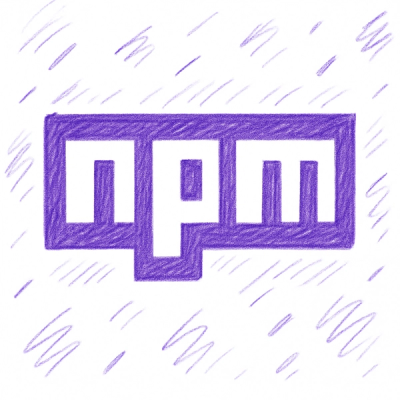
Security News
npm Adopts OIDC for Trusted Publishing in CI/CD Workflows
npm now supports Trusted Publishing with OIDC, enabling secure package publishing directly from CI/CD workflows without relying on long-lived tokens.
@webiny/pulumi
Advanced tools
@webiny/pulumiA small framework for creating flexible Pulumi programs.
npm install --save @webiny/pulumi
Or if you prefer yarn:
yarn add @webiny/pulumi
The @webiny/pulumi package enables creation of flexible Pulumi apps (programs).
More specifically, a Pulumi app not only encapsulates the essential Pulumi program code defined by developers, but also, once defined, provides a way to adjust any defined cloud infrastructure resource configuration and even add new resources into the mix.
This is useful when you just want to export a simple constructor function to the user, and not bother them with all the internals. And, as mentioned, in those rare cases when the user actually needs to perform further adjustments, a Pulumi app provides a way to do it.
💡 TIP
Pulumi apps are heavily used in real Webiny projects. As mentioned, this is because of their ability to abstract the actual cloud infrastructure code from the user, and, at the same time, provide a way for the user to perform adjustments when needed.
The following example shows how a Pulumi app looks in the actual code:
// This is imported in our Pulumi program's entrypoint file (index.ts).
import createXyzApp from "@webiny/xyz-app";
export = async () => {
const xyzApp = createXyzApp({
pulumi: app => {
// Let's imagine the `xyz` Pulumi app deploys an Amazon S3 bucket.
// Then, we would be able to do something like the following:
app.resources.bucket.config.acl(aws.s3.CannedAcl.Private);
app.resources.bucket.config.forceDestroy(true);
}
});
return xyzApp.run();
};
| Example | Description |
|---|---|
| Quick Example | Shows how to create and use a simple Pulumi app. |
createPulumiApp
export interface CreatePulumiAppParams<TResources extends Record<string, unknown>> {
name: string;
path: string;
config?: Record<string, any>;
program(app: PulumiApp): TResources | Promise<TResources>;
}
export declare function createPulumiApp<TResources extends Record<string, unknown>>(params: CreatePulumiAppParams<TResources>): PulumiApp<TResources>;
Creates a new Pulumi app.
// Defining the app.
import * as aws from "@pulumi/aws";
import { createPulumiApp } from "@webiny/pulumi";
export interface CreateMyAppParams {
pulumi?: (app: ReturnType<typeof createMyApp>) => void;
}
const createMyApp = (projectAppConfig: CreateMyAppParams) => {
const app = createPulumiApp({
name: "my-app",
path: "relative/path/from/cwd",
program: async app => {
const bucket = app.addResource(aws.s3.Bucket, {
name: "my-app",
config: {
acl: aws.s3.CannedAcl.PublicRead,
forceDestroy: false,
website: {
indexDocument: "index.html",
errorDocument: "index.html"
}
}
});
app.addOutputs({
appStorage: bucket.output.id
});
return {
bucket
};
}
});
if (projectAppConfig.pulumi) {
projectAppConfig.pulumi(app);
}
return app;
};
FAQs
A simple Node.js Pulumi SDK.
We found that @webiny/pulumi demonstrated a healthy version release cadence and project activity because the last version was released less than a year ago. It has 1 open source maintainer collaborating on the project.
Did you know?

Socket for GitHub automatically highlights issues in each pull request and monitors the health of all your open source dependencies. Discover the contents of your packages and block harmful activity before you install or update your dependencies.

Security News
npm now supports Trusted Publishing with OIDC, enabling secure package publishing directly from CI/CD workflows without relying on long-lived tokens.

Research
/Security News
A RubyGems malware campaign used 60 malicious packages posing as automation tools to steal credentials from social media and marketing tool users.

Security News
The CNA Scorecard ranks CVE issuers by data completeness, revealing major gaps in patch info and software identifiers across thousands of vulnerabilities.